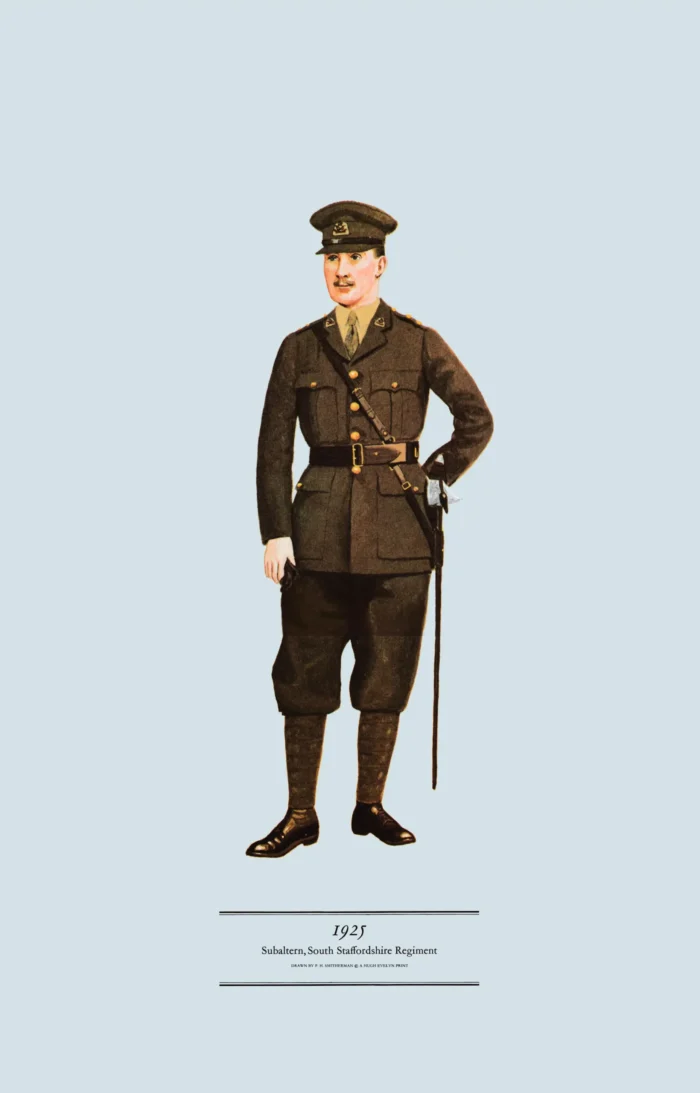Subaltern, South Staffordshire Regiment, 1925
£12.00
in 1881 the South Staffordshire became the Staffordshire Regiment (Prince of Wales’s); in 2007 it became the Mercian Regiment – MERC (scroll down for a more detailed Description)
Published 1970 by © Hugh Evelyn Limited; drawn by Colonel Philip Henry Smitherman (1910-1982), Royal Corps of Signals
Size: c. 24.5 x 37.5 cm [9 ½ ″ x 14 ½ ″] (may vary slightly from printers’ cut 50 years ago)
Printed on on medium cardstock weighing 144 g/sm2 faced in light greyish blue (RGB c. d4e1e8)
Print is STANDARD size – shipping is the same for 1 to 10 prints (based on largest print size in your order) – see Shipping & Returns
In stock
- Satisfaction Guaranteed
- No Hassle Refunds (see Shipping and returns)
- Secure Payments
Description

Since 2007 The Mercian Regiment. The South Staffordshire Regiment was formed in 1881 from the 38th Foot and the 80th Foot (raised in 1702 and 1793 respectively). In 1707 the 38th was sent to the West Indies, where it remained for fifty years utterly neglected. At one time the officers received no pay for seven years. The brown canvas behind their cap and collar badges recalls these privations. Reduced to a single Army battalion after the Second World War, the regiment was amalgamated in 1959, with the North Staffordshire Regiment to form the Staffordshire Regiment (Prince of Wales’s) which was later, in 2007, amalgamated with the Cheshire Regiment and the Worcestershire and Sherwood Foresters Regiment to form the Mercian Regiment.
Here is an officer in the parade dress generally adopted by the infantry after the First World War. Neither ornate nor eye-catching, it is practical and smart. The ‘plus fours’ adopted in 1920 were a common item of civilian wear then but had been an item of dress in the Indian infantry for a hundred years. The puttees (a Hindustani word) came from the same source. The ‘Sam Brown’ belt was invented by Major Sam Brown, later General Sir Sam Brown, of the 2nd Punjab Cavalry. During the Mutiny in 1858 he lost his left arm (and won the V.C.) He devised this belt to hold both sword and pistol. It was gradually accepted by the Indian and the British Armies.
Additional information
| Dimensions | 24 × 37.5 cm |
|---|




